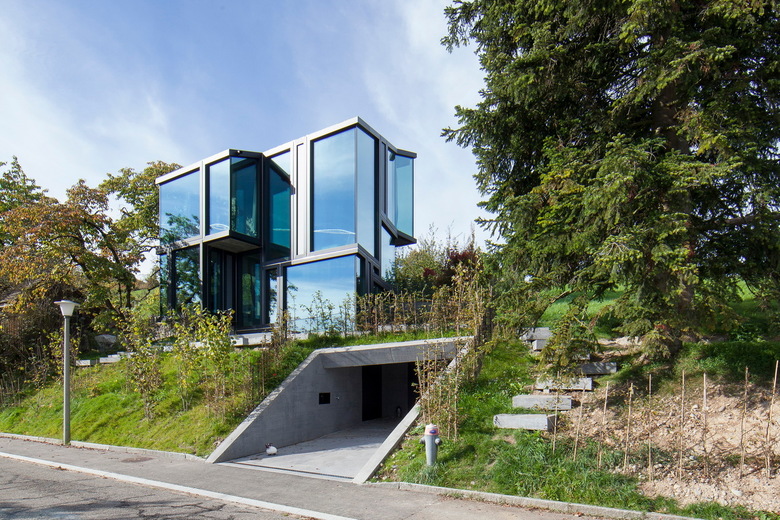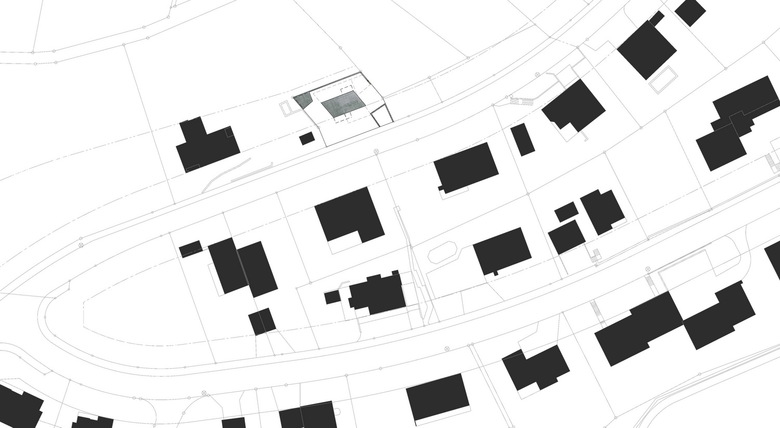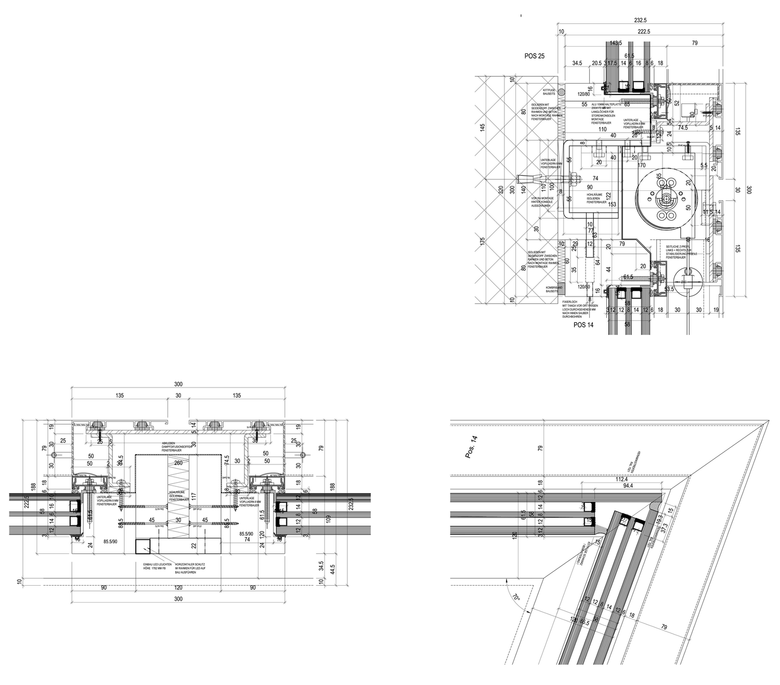A Glass House Like a Grapevine
An area of 45 square meters is not much for the planning of a house. Nevertheless L3P Architekten managed to make room for a family of four in Dielsdorf near Zurich – using the logic of the surrounding grapevines to articulate the structure.
Project: House on Rebhang (Dielsdorf, Switzerland) | Architect: L3P Architekten (Regensberg) | Client: Private | Manufacturer: Glas Trösch (Bützberg) | Product: Silverstar Combi-Neutral insulating glass | More project details below
Setbacks in building codes are meaningful and useful, since they maintain some distance between neighbors. For any architect, these setbacks are often the first step in designing a house, since they define the limits of what can be built. This was particularly pronounced when L3P Architekten started to work on a house on a small plot of land in Dielsdorf, northwest of Zurich. After setbacks were applied, they were left with a mere 5-meter by 9-meter box, hardly the ideal size of a house in the classical sense of the word.
Given that Dielsdorf is a rural area and the house is close to vineyards built atop some slopes, Boris Egli of L3P came up with the idea of building the house according to that of a grapevine: a massive central core with floors and glass walls hung off of it like branches. The "branches" extending from the central concrete wall reach out to the limits set by the code, resulting in an irregular footprint. Fortunately the code allowed the house to rise vertically, so it reaches a height of 7.5 meters across what is in effect three floors, but which is much more complex in section.
The interior appears confusing, but only at first glance. The carport, stuck into the slope of the site, leads to the entrance reached by the central stair. From the main level, the rooms spiral around the main wall at different heights: office, dining, multi-purpose, kitchen, reading nook, living room, bedroom, dressing room, bath... The stepping formed by the sequence of spaces creates edges for seating. Yet without any sound absorption from the concrete or glass, interior furnishings, such as sofas, were needed to soften the sounds boucing off the hard surfaces.
The panes of glass at the perimeter of the plan were designed to be full-height and therefore open up the house as much as possible to the surroundings, in effect making the house seem larger from the inside. For privacy, interior curtains were provided, with an aluminum coating on the side facing the glass to cut down on heat gain. Since the exterior is fully glazed, L3P chose an insulated glass with a coating (Glas Trösch's Silverstar Combi) that copes well with the sometimes large differences between winter and summer. The triple-pane glass is set into a combined wood/aluminum framing system in dark color. No framing is present at the corners, though, where the outer panes extend past the stops to open up the view and accentuate the grapevine metaphor.
Project
House on Rebhang
Dielsdorf, Switzerland
Client
Private
Architect
L3P Architekten ETH FH SIA AG
Regensberg, Switzerland
Project manager: Boris Egli
Manufacturer
Glas Trösch
Bützberg, Switzerland
Product
Insulated glass with Silverstar Combi Neutral 61/32 coating
Other Manufacturers
Mullion and transom window system: Ernst Schweizer AG Metallbau
Window treatments : Griesser AG
Civil Engineer
Bona + Fischer Ingenieurbüro AG
Winterthur, Switzerland
Project Manager: Urs Oberli
Construction Physics
Wichser Akustik & Bauphysik AG
Zurich
Project Manager: Stephan Huber
Completion
2014
Photography
Vito Stallone
This article originally appeared as "Raumoffen" on German-Architects.











